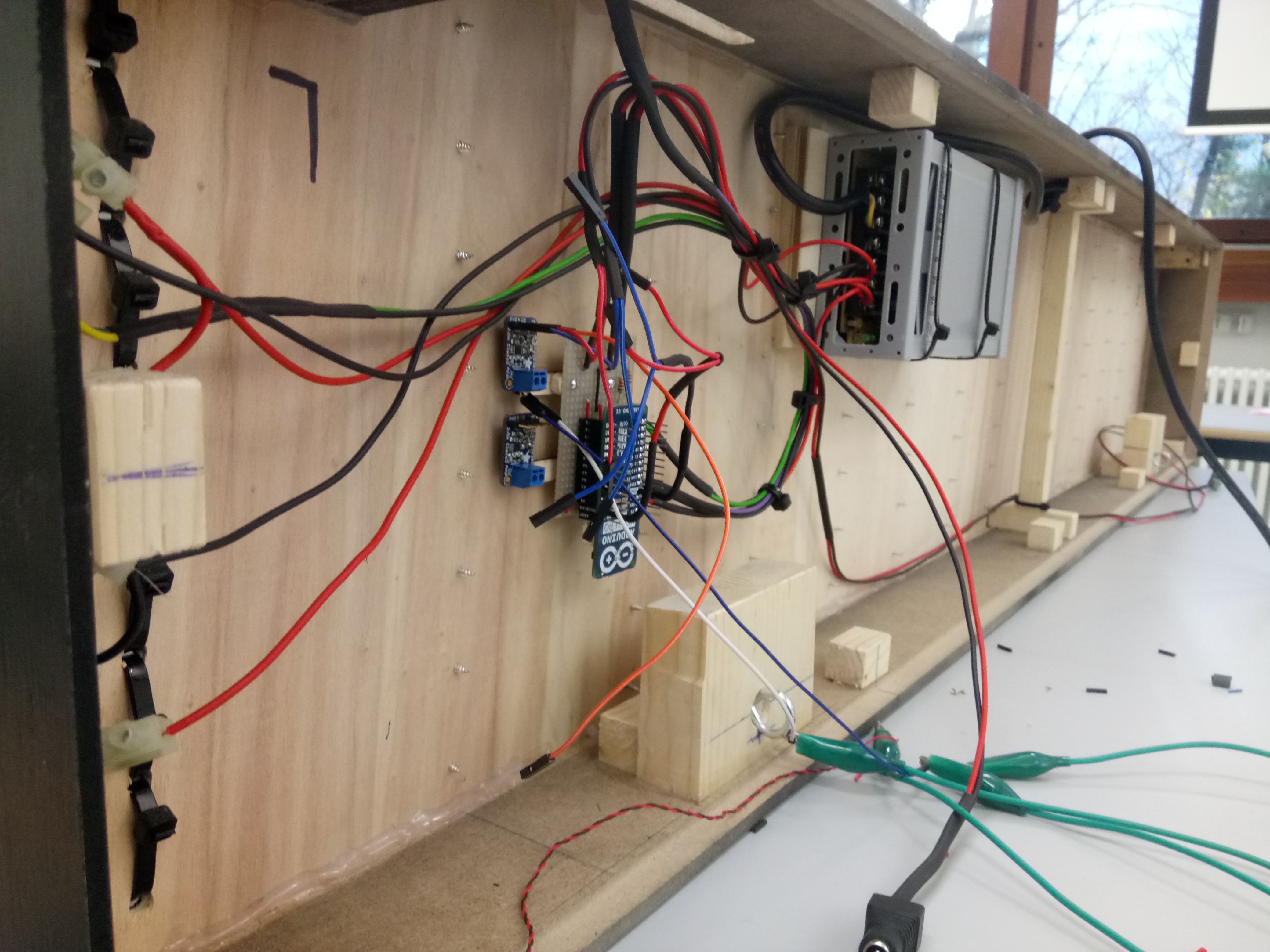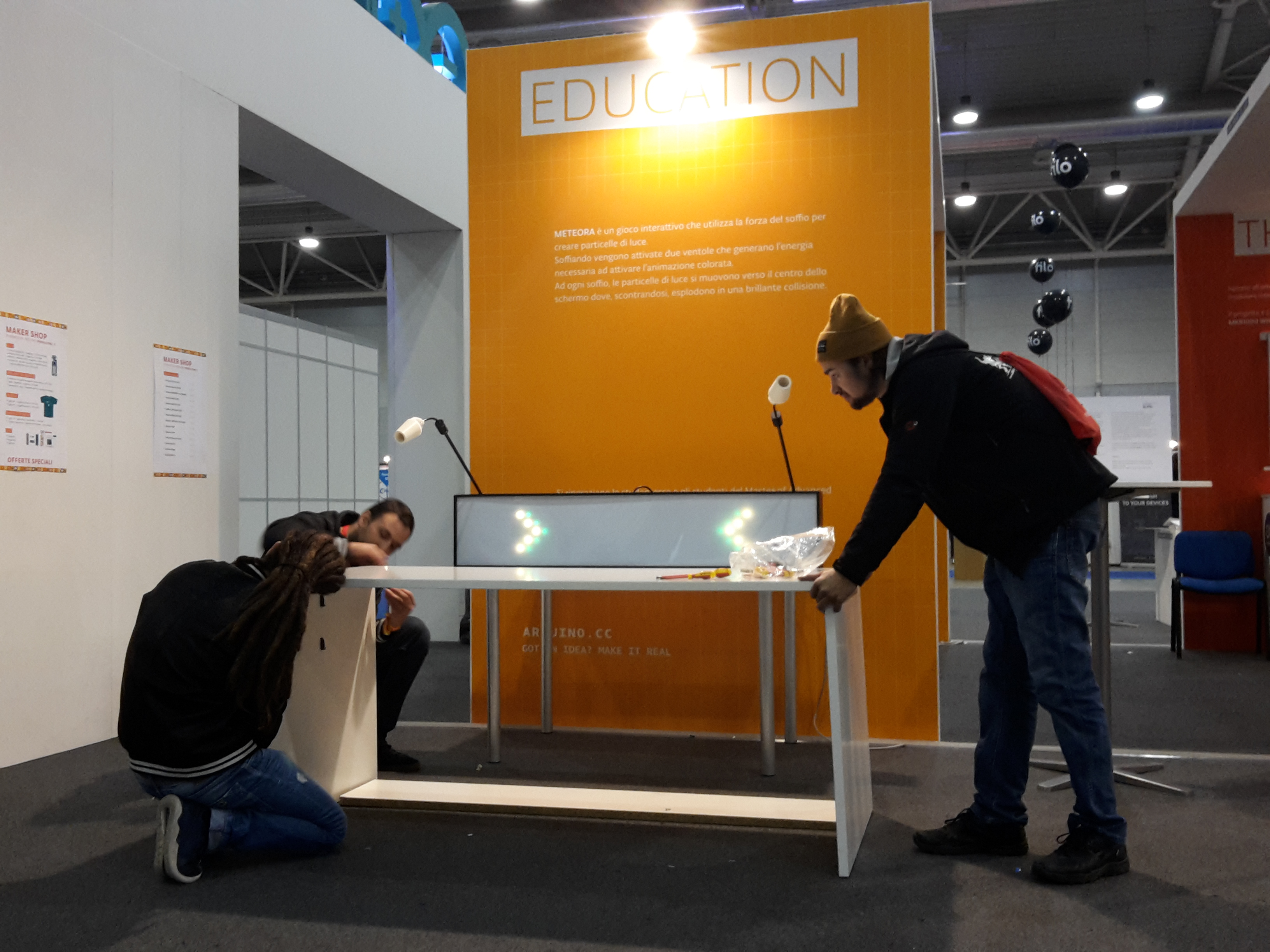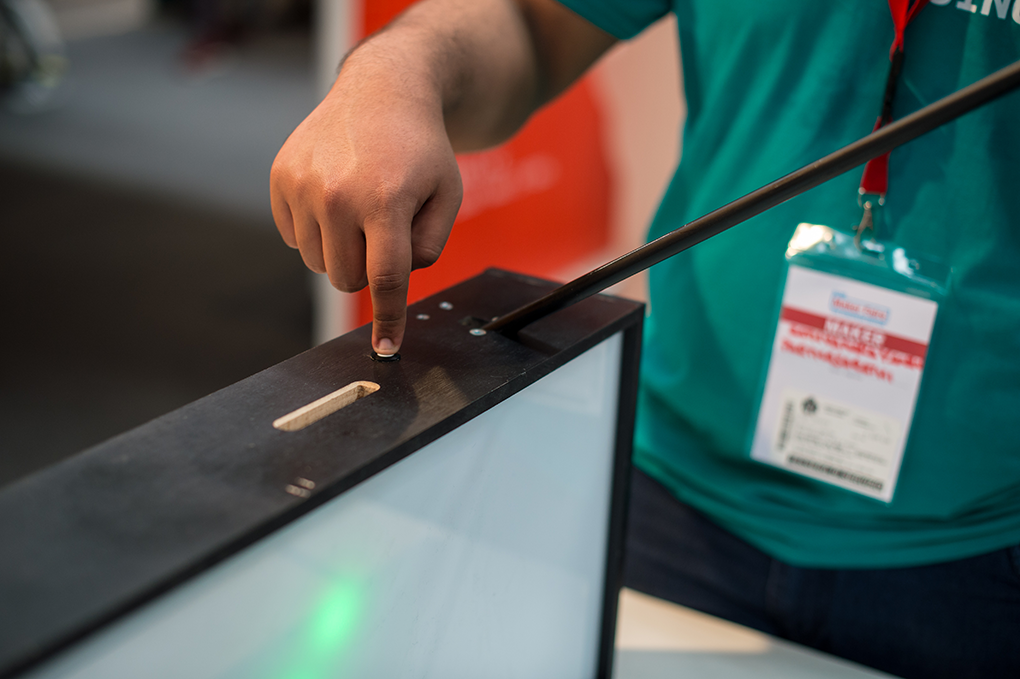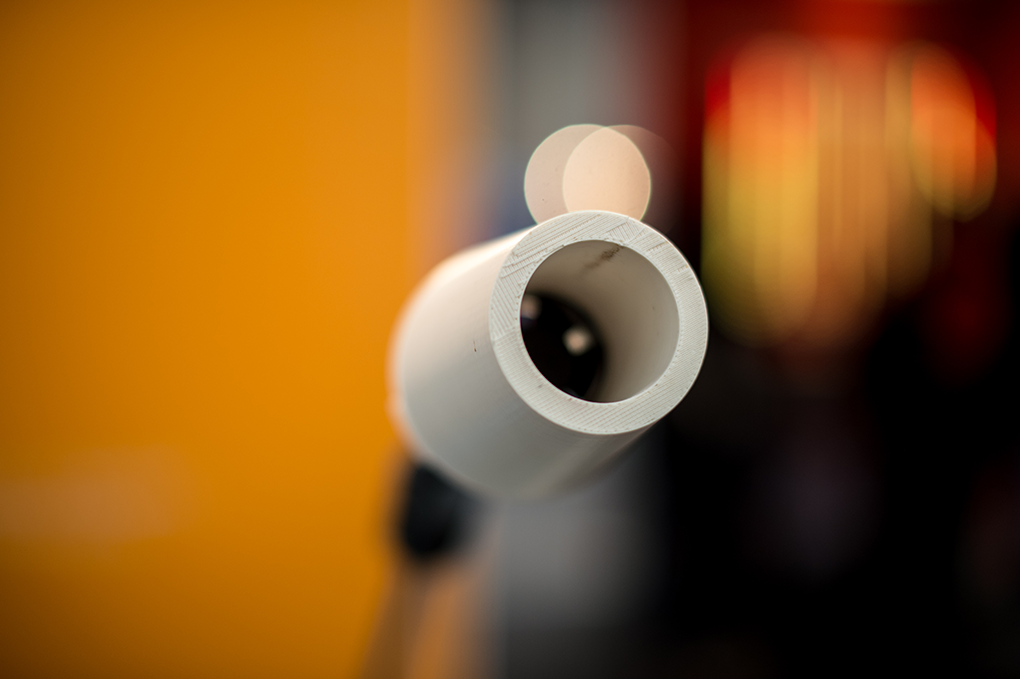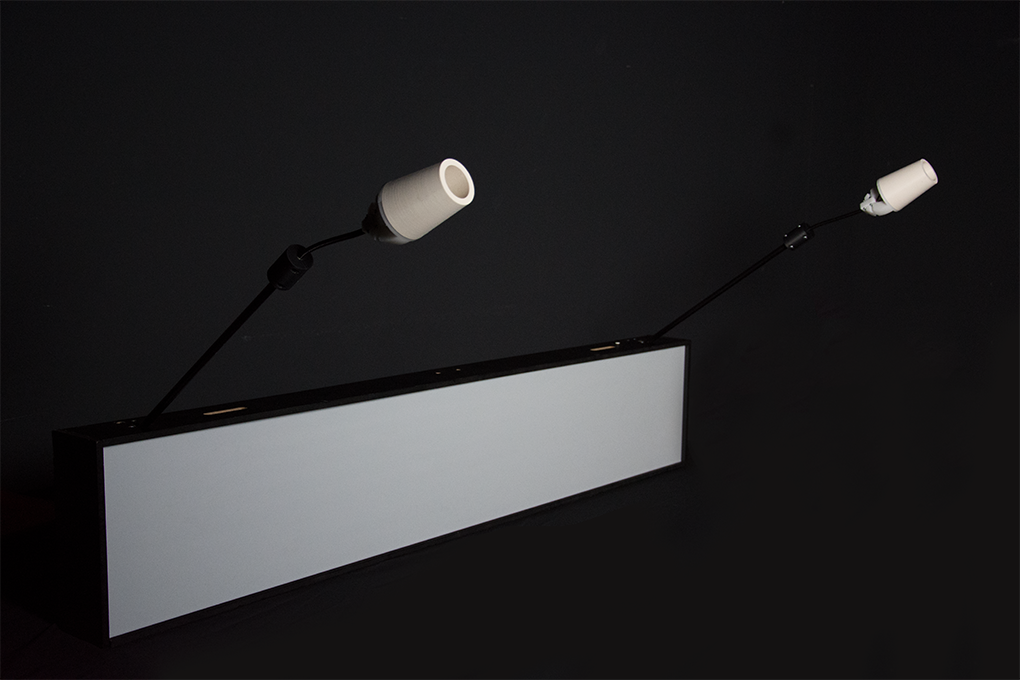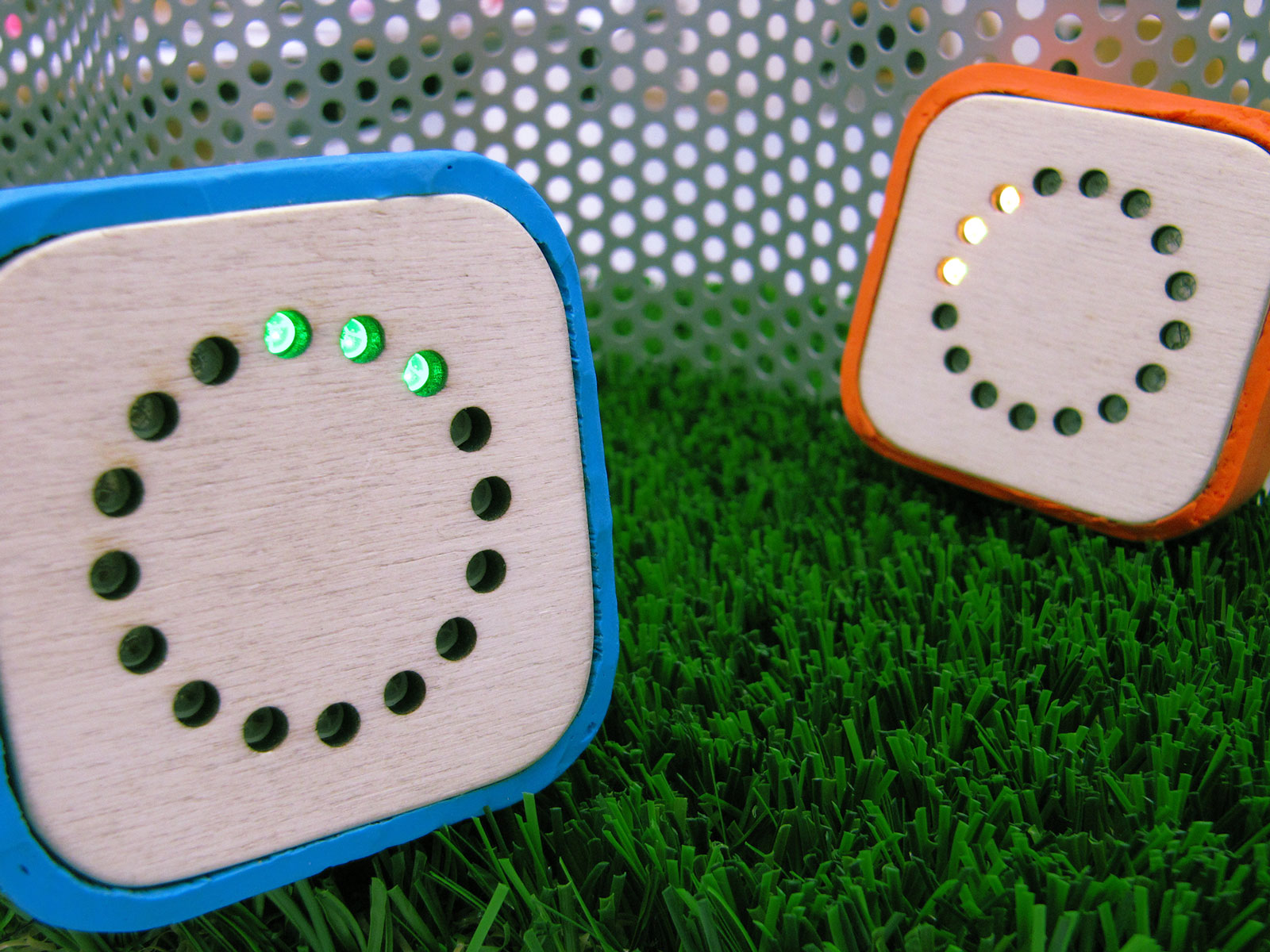Meteora
Meteora is a creative and collaborative experience in which two people engage on a special FX fight.
Using computer fans as generators, the user produces a particles flow on the opponent's direction, and based on the speed of the air blown on the fans, Meteora generates faster particles. The choice of an LED display contributed in creating an overall oldschool look: when the players' particles collided in the center, the resulting explosion's retro-style was fascinating and amazing!
We went to Rome to assist users at Arduino's exhibition booth, and even if the experience was intense on a physical point of view and sometimes "breathless", the players at Maker's Faire enjoyed it a lot!
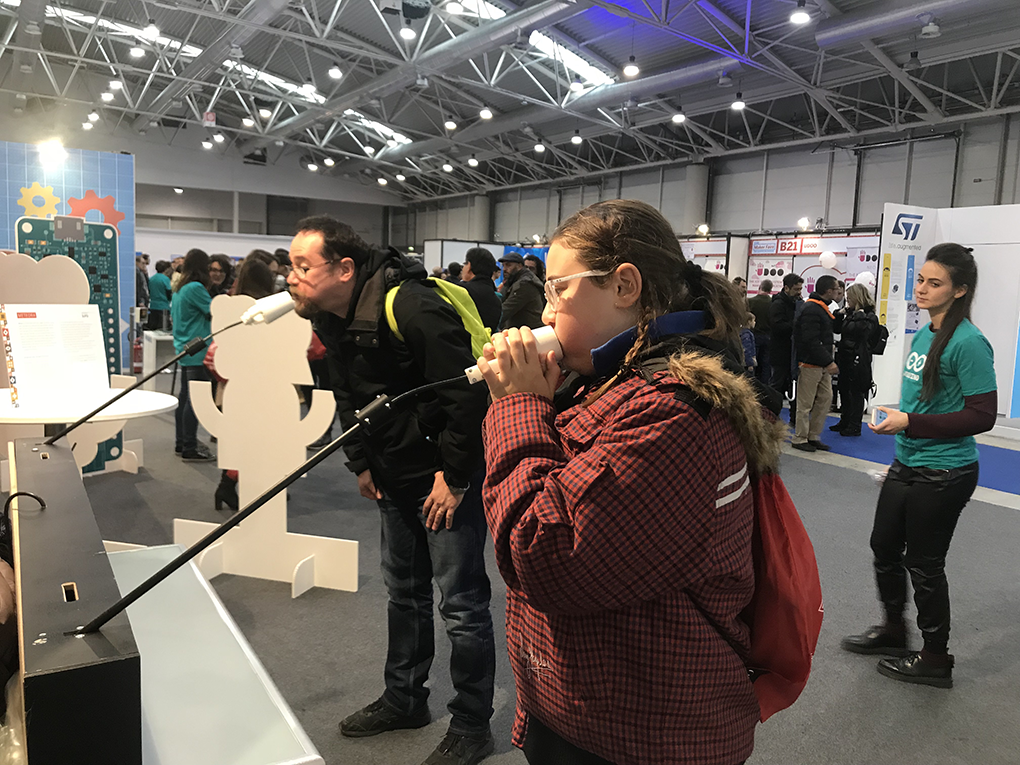
Brief and research
After an introductory week on Arduino boards essential programming and learning electronics' basics, we started with the brief and by analysing the constraints:
- the experience is for up to two people
- the duration time should be short, 1 to 2 min.
- it doesn't need to be "competitive"
- we would like the display to be made of LEDs
- as the experience is on a faire, the players' interaction modality should not damage the device/ experience components
We then brainstormed on the subject of interactive and tangible interfaces, and we decided we wanted to create an "essential" experience, where the result is co-authored by two participants, and where "less is more" brings out the joy of the play dynamics.
Also, as the experience should represent Arduino's opensource and playful philosophy, we thought of a way to let users interact using something that's not thought as a sensor, and give them a different perspective and inspiration on what can be done, and on the creative approach that we all can have.
Conclusions
The creation of Meteora has been a lot of fun, even if we only had two weeks! I've been learning a lot about planning and prototyping this kind of experiences, but also about the key consideration on human behaviour that are essential for a positive and frictionless interaction.
An A-to-Z project is a good excercise to realise that –without any user testing– you should consider "invalid" all the assumptions you made. Even if you did a lot of research on the subject, only a comprehensive field-test will give you the hints you need to improve your design and get the experience "right". User testing always help in understanding the affordances
Like "Ok, it's december. Should we consider that some attendee will be sick and he won't try it?", or maybe "Will the packaging and the parcel service bring my package SAFE to it's destination? Did I include emergency spare parts?".
